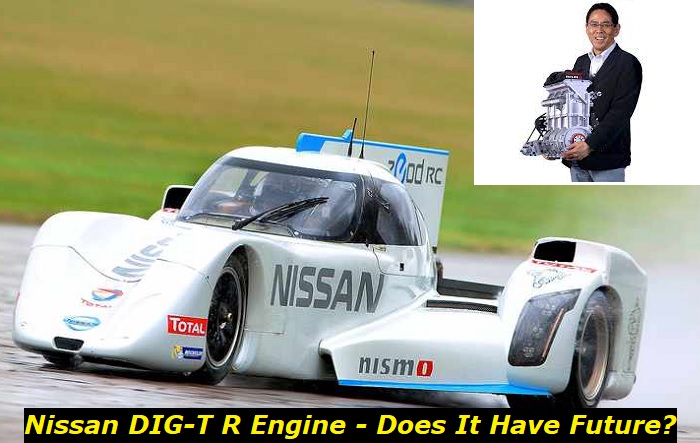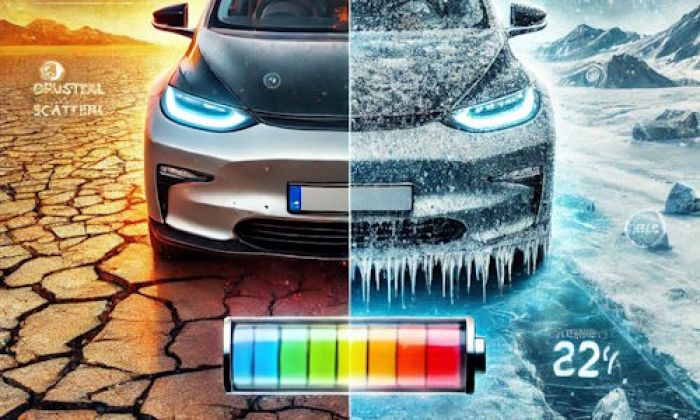The DIG-T R Nissan engine is an advanced, turbocharged motor that the renowned car manufacturer has developed to provide impeccable power and speed for their sports cars. This engine was released in 2014 specifically for the Nissan ZEOD RC Le Mans race car prototype. Unfortunately, the ZEOD RC experienced a gearbox failure during its first race and had to be retired.
There has not been much news about the DIG-T R since its debut in 2014, and it is speculated that Nissan has discontinued its production for the time being. In this article, we will explore what we know about this engine, as well as its potential for the future.

What is the DIG-T R Nissan Engine?
The DIG-T R Nissan engine is a 1.5-liter, three-cylinder turbocharged engine that is designed for high-performance applications. This engine is part of Nissan's DIG (Direct Injection Gasoline) engine family and features a number of advanced technologies, making it perfect for high-performance cars.
The DIG-T R engine is capable of producing up to 400 horsepower and 280 lb-ft of torque, which provides a substantial boost in power over traditional naturally aspirated engines. This engine is also designed for efficiency, featuring an advanced cylinder head design, an optimized cooling system, and low-friction internal components.
In addition to improved performance and efficiency, the DIG-T R Engine also offers enhanced durability for racing conditions. This engine is designed to withstand high G-forces and high temperatures, making it ideal for the racetrack.
In general, Nissan made a huge technological leap with the DIG-T R engine. Its characteristics and advanced design made it a perfect choice for the ZEOD RC, and while it has not yet seen widespread use in production vehicles, it could be a great option for future high-performance applications.
Benefits of the DIG-T R Nissan Engine
There are several benefits to the DIG-T R Nissan engine, including:
- High Performance
The turbocharged design of the DIG-T R engine provides a significant boost in horsepower and torque, making it ideal for high-performance applications. This engine is capable of accelerating quickly and delivering a sporty driving experience.
- Efficiency
The advanced design of the DIG-T R engine is optimized for efficiency, which helps to improve fuel economy and reduce emissions. This engine features a high-pressure fuel injection system, low-friction internal components, and an optimized cooling system, all of which contribute to its efficiency.
- Versatility
The DIG-T R engine was designed to be versatile, making it suitable for a wide range of applications. This engine was used in the Nissan ZEOD RC race car, but it could be used in other applications as well, such as performance cars or even hybrid vehicles.
- Advanced Technology
With a weight of only 40kg, the DIG-T R engine is a compact and lightweight engine that is packed with advanced technology. It revs up to 7500 RPM, and its power-to-weight ratio is 7.35kW per kilogram.
Any Future in the DIG-T R Nissan Engine?
Despite its advanced capabilities, there are some doubts as to whether or not the DIG-T R engine will have a long-term future in the automotive industry. As more and more manufacturers focus on electric vehicles and other alternative forms of propulsion, traditional combustion engines may become less popular.
However, the DIG-T R engine still has the potential for use in future high-performance applications. If Nissan continues to develop and refine the engine, it could be used in a variety of applications, from regular production vehicles to race cars.
It should be noted that since 2014, there has been no news from Nissan regarding the continued production of this engine. As such, it is unclear whether or not they will continue to manufacture it in the future. In any case, the DIG-T R engine has shown to be an impressive and powerful piece of technology that is sure to offer an exciting driving experience.
Some automotive enthusiasts believe that one of the main factors that prevented the DIG-T R engine from being used in a mass-production vehicle is its reliability. While the engine is capable of producing high levels of power and torque, it may not have been reliable enough for mass-production cars.
High-performance engines such as this one need to be highly reliable if they are to be used in production vehicles, and the DIG-T R engine may not have been up to the challenge. Additionally, while fuel consumption was low for racing conditions, it may not have been suitable for normal driving conditions.
Furthermore, some users believe that the photo of a Nissan representative holding the DIG-T R engine was photoshopped, which indicates that there may not be a future for this engine after all.
It is also interesting that some engines designed a long time before the DIG-T R had similar specifications. For instance, The Renault RS01 F1 engine was also 1,5 liter and had 500 horse powers, and it was used in Formula 1 racing from 1977 to 1980. This shows that, in some ways, the DIG-T R engine is not as revolutionary as some people may think.
In conclusion, while the DIG-T R engine is an impressive feat of engineering, its future remains uncertain. It is likely that other engines will take their place in the future if Nissan does not continue to develop and refine it. Nevertheless, the DIG-T R has demonstrated that traditional combustion engines are still capable of producing high levels of power, even in a small package.
What About Nissan DIG-T Engines?
While the DIG-T R engine belongs to the Nissan DIG-T family, there are other engines that belong to this family as well. Let's take a look at some of the other engines that are part of the Nissan DIG-T group.
Nissan's DIG-T engines are a family of turbocharged petrol engines with direct injection. They were introduced in 2010 and are available in a variety of Nissan vehicles, including the Juke, Qashqai, and X-Trail.
The DIG-T engine is available in three different power levels: the 1.2L DIG-T, the 1.3L DIG-T, and the 1.6L DIG-T. All three versions are part of Nissan's innovative Variable Valve Timing control system (VVT) that helps maximize performance while also improving fuel efficiency and emissions.
The 1.2L version produces 115 horsepower and 140 lb-ft of torque, while the 1.3L produces 140 hp and 177 lb-ft of torque. The 1.6L version produces 163 hp and 177 lb-ft of torque. All of these engines offer improved fuel economy over traditional non-turbocharged petrol engines.
Nissan's DIG-T engines are designed to be fuel efficient, powerful, and reliable. They feature dual overhead camshafts with variable valve timing control, a high compression ratio, and an electronically controlled turbocharger with an intercooler that increases air intake pressure for maximum power output. The engines also have an innovative knock-control system that helps reduce emissions and improve fuel economy.
Overall, Nissan's DIG-T engines are a great choice for car owners looking for a reliable and efficient engine that still offers good power output. With three different power levels available, there's sure to be an option that suits your needs. Whether you're looking for a powerful engine for towing or a more economical option for city driving, the DIG-T engine is a great choice.
Bottom Line
The DIG-T R engine is a high-performance, turbocharged engine that was designed for use in the Nissan ZEOD RC race car. However, due to its potential unreliability and high fuel consumption, it has not yet seen widespread use in production vehicles.
It is unclear whether or not Nissan will continue to develop and refine this engine or if it will remain a unique and impressive piece of technology that was developed for a single application. Regardless, the DIG-T R engine is sure to continue to impress automotive enthusiasts with its advanced design and powerful capabilities.
About the authors
The CarAraC research team is composed of seasoned auto mechanics and automotive industry professionals, including individuals with advanced degrees and certifications in their field. Our team members boast prestigious credentials, reflecting their extensive knowledge and skills. These qualifications include: IMI: Institute of the Motor Industry, ASE-Certified Master Automobile Technicians; Coventry University, Graduate of MA in Automotive Journalism; Politecnico di Torino, Italy, MS Automotive Engineering; Ss. Cyril and Methodius University in Skopje, Mechanical University in Skopje; TOC Automotive College; DHA Suffa University, Department of Mechanical Engineering






Add comment